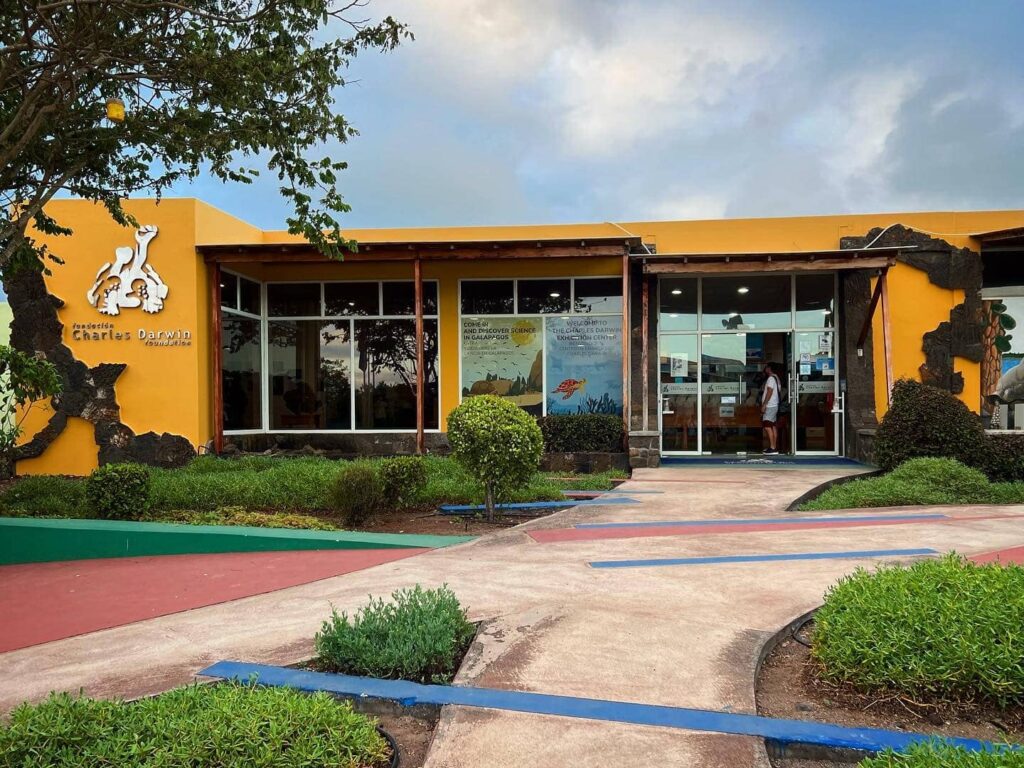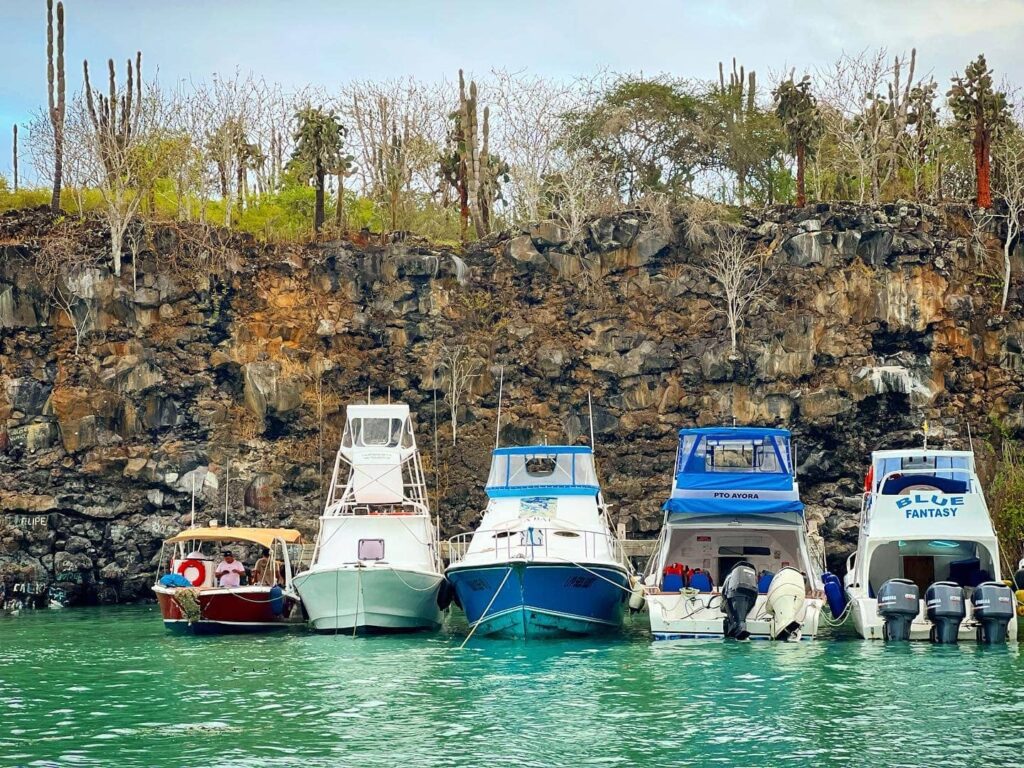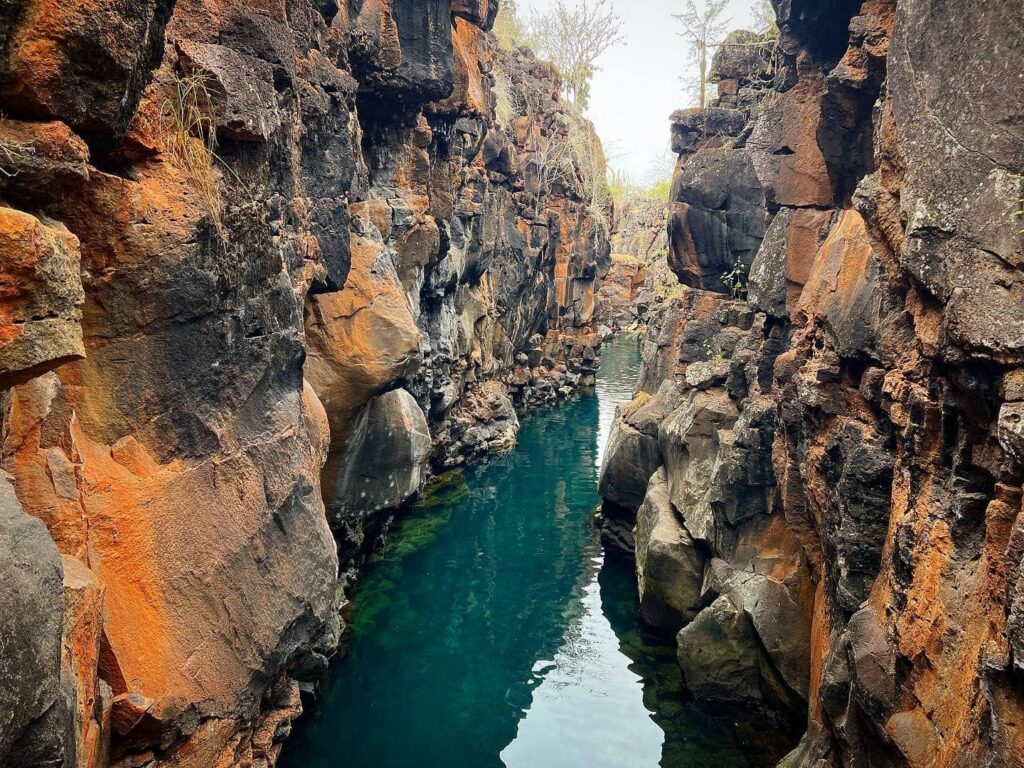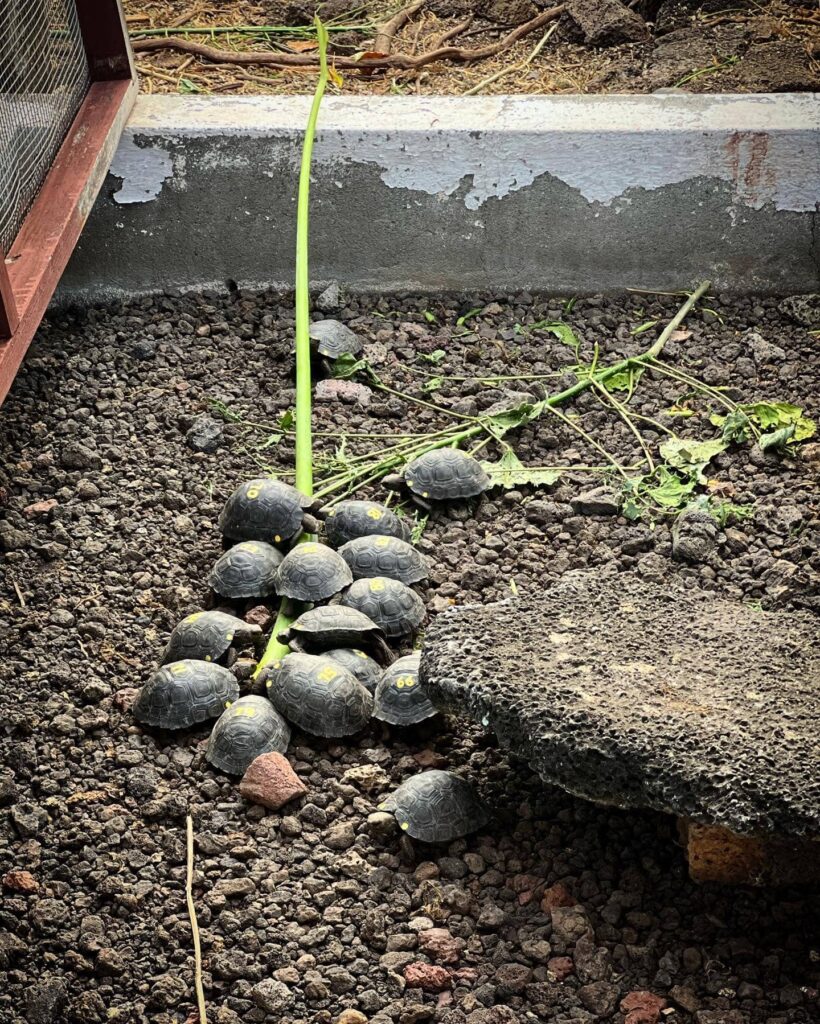Santa Cruz Island, Galapagos: Wildlife, Conservation & Adventure
Santa Cruz Island stands as the vibrant heart of the Galápagos Archipelago. As the gateway to the islands via bustling Baltra Airport, Santa Cruz welcomes travelers with its dynamic blend of ecological marvels and vibrant local culture. Renowned as the epicenter of giant tortoise conservation, the island’s Charles Darwin Research Station symbolizes its pivotal role in safeguarding the archipelago’s future, breeding hundreds of these ancient reptiles annually. From the beauty of lava tunnels to the mist-draped Scalesia forests surrounding Los Gemelos craters, Santa Cruz’s landscapes shift dramatically—arid coasts give way to lush highlands, all within a short journey.
Home to over 18,000 residents, Puerto Ayora pulses with life, offering a unique fusion of island traditions and modern ecotourism. Yet Santa Cruz’s thriving communities coexist with pressing conservation challenges, from invasive species to climate resilience efforts. Here, every trail and tidepool tells a story of adaptation, conservation, and the delicate balance between humanity and nature.
Santa Cruz Fast Facts
- Gateway to the Galapagos: Santa Cruz is home to Baltra Airport (GPS), the archipelago’s busiest entry point, connecting travelers to Ecuador’s mainland.
- Giant Tortoise Central: The Charles Darwin Research Station here breeds 500+ giant tortoises annually for reintroduction into the wild.
- Volcanic Wonders: Explore lava tunnels and the twin volcanic sinkholes of Los Gemelos.
- Population Center: Over 18,000 residents make Santa Cruz the most populous island, blending local culture with tourism.
- Unique Climate: Transition from drier coastal zones to highland forests—all within a 45-minute drive.
Santa Cruz Activity Highlights
Tour the Charles Darwin Research Station
Witness giant tortoise conservation in action and meet hatchlings destined for the wild.
Snorkel at Tortuga Bay
Swim alongside sea turtles, reef sharks, and marine iguanas in pristine waters.
Hike the Lava Tunnels
Navigate underground passages formed by ancient lava flows, now home to rare insects and bats.
Kayak in Black Turtle Cove
Paddle through mangrove lagoons where juvenile blacktip sharks and rays thrive.
Explore Los Gemelos
Trek around twin volcanic craters surrounded by endemic Scalesia pedunculata forests.
Relax at Garrapatero Beach
Spot pink flamingos in nearby lagoons or snorkel in the calm, shallow waters.
Santa Cruz Animal Highlights
- Galapagos Giant Tortoise
- Marine Iguana
- Blue-Footed Booby
- Galapagos Sea Lion
- Hammerhead Shark
- Galapagos Green Turtle
History
Santa Cruz’s modern history began in the 1920s when European settlers, drawn by its fertile volcanic soil, established farms in the highlands. The island changed greatly in 1959 with the creation of the Galapagos National Park and Charles Darwin Research Station, transforming it into a global hub for conservation science. During WWII, the U.S. military built Baltra Airport, which now serves as the archipelago’s primary gateway. Today, Santa Cruz balances eco-tourism with efforts to protect its ecological heritage, from invasive species management to sustainable fishing practices.
Geography
- Area: 986 km² (largest inhabited island in the Galapagos).
- Elevation: Cerro Crocker, the highest point, rises to 864m (2,835ft).
- Key Features: Coastal mangroves, arid zones dotted with cacti, and humid highland forests.
Santa Cruz Island Airport (Baltra Airport, GPS)
Baltra Airport, located on a nearby islet, is a 10-minute ferry ride from Santa Cruz. Daily 1.5-hour flights connect to Quito and Guayaquil via Avianca or LATAM. From the airport, buses and ferries transport travelers to Puerto Ayora, the island’s main town.

Conservation Challenges
- Invasive Species: Aggressive guava trees and blackberry vines choke native Scalesia forests, while rats prey on tortoise eggs.
- Urban Expansion: Puerto Ayora’s rapid growth threatens highland habitats critical for migrating tortoises.
- Marine Pressures: Illegal fishing depletes shark populations, undermining the Galapagos Marine Reserve’s balance.
- Climate Resilience: Rising sea temperatures stress coral reefs, prompting initiatives like hybrid solar-diesel energy grids.
Economy
- Tourism: Over 85% of locals work in hotels, tour operations, or conservation projects like the Galapagos Tortoise Movement Ecology Programme.
- Fishing: Sustainable lobster and tuna fisheries support coastal communities, though conflicts with conservation goals persist.
- Agriculture: Highland farms produce organic coffee, sugarcane, and avocados, sold in Puerto Ayora’s markets.

Climate
Santa Cruz has two distinct seasons: June–November brings cooler, drier weather (18–24°C, 64-75°F), ideal for hiking and wildlife spotting. December–May offers warmer seas (22–28°C, 71-82°F), perfect for snorkeling and beach days. Microclimates shift dramatically—pack layers for misty highlands and sunny coasts!
How to Visit Santa Cruz Island
Galapagos Cruises
Multi-day voyages include guided tours of Santa Cruz’s highlights.
Secure your spot on a luxury cruise—explore Santa Cruz and beyond! Interested in saving some money with a last minute option?
Island-Hopping Tours
Base yourself in Puerto Ayora and take day trips to nearby islands.
Design your island-hopping adventure with expert local guides!
Activities & Experiences
1. Snorkeling at Tortuga Bay
Swim alongside white-tipped reef sharks, golden rays, and Pacific green turtles in turquoise waters.
2. Highlands Tortoise Trekking
Hike through lush Scalesia forests to spot wild giant tortoises grazing in misty meadows.
3. Sunset or Snorkeling at Las Grietas
Cliff-jump into this crystal-clear water crevice, a hidden gem near Puerto Ayora where crystal-clear waters reveal tropical fish and submerged lava formations.
4. Birdwatching at El Garrapatero
Spot flamingos, herons, and Darwin’s finches in coastal lagoons.
5. Diving at Gordon Rocks
Advanced dive sites teem with hammerhead sharks, eagle rays, and moray eels.
6. Shopping at Puerto Ayora Market
Buy local coffee, handmade jewelry, and organic chocolate at the waterfront market.
7. Kayaking in Tortuga Bay
Paddle along the waters of Tortuga Bay, where marine iguanas dive beneath your kayak and blue-footed boobies soar overhead. The bay’s calm currents make it ideal for beginners.
8. Biking to El Chato Tortoise Reserve
Rent a bike in Puerto Ayora and pedal to El Chato Reserve, a highland sanctuary where giant tortoises roam freely in their natural habitat.
9. Visiting the Fish Market at Puerto Ayora Docks
Watch sea lions and pelicans beg for scraps at the lively fish market, where local fishermen clean their daily catch.
10. Scuba Diving at Daphne Major
Join a diving excursion to this nearby islet, known for schooling hammerhead sharks, eagle rays, and occasional whale sharks.
11. Hiking Cerro Crocker
Trek to Santa Cruz’s highest point (864m, 2835ft) for panoramic views of the island’s volcanic craters and Scalesia forests.
12. Sunset Cruise Around Academy Bay
Sail past marine iguanas and sea lions while sipping cocktails on a catamaran tour departing from Puerto Ayora.
13. Coffee Tasting in the Highlands
Visit organic coffee plantations to sample locally grown beans and learn about sustainable farming practices.
14. Birdwatching at Cerro Mesa
Spot native species like the Galapagos rail and vermilion flycatcher in this protected highland reserve.

Animal Encounters
Mammals
- Galápagos Sea Lion (Zalophus wollebaeki): Playful pups bask on Puerto Ayora’s docks, often seen sunbathing or swimming alongside snorkelers.
- Galápagos Fur Seal (Arctocephalus galapagoensis): Smaller and shyer than sea lions, these nocturnal seals rest in shaded lava crevices.
- Bottlenose Dolphin (Tursiops truncatus): Frequently seen riding boat bow waves; these playful and engaging animals delight visitors.
- Sperm Whale (Physeter macrocephalus): Spot these deep-diving giants on boat tours to the Bolivar Channel (June–September).
- Galápagos Rice Rat (Nesoryzomys spp.): Endemic rodents found in highland forests, rarely seen due to invasive predators.
Reptiles
- Marine Iguana (Amblyrhynchus cristatus): The world’s only ocean-going iguana, often seen sunbathing on lava rocks at Tortuga Bay.
- Galápagos Land Iguana (Conolophus subcristatus): Yellow giants feeding on cactus pads in arid zones; reintroduced to Dragon Hill.
- Galápagos Giant Tortoise (Chelonoidis niger): Includes subspecies like C. n. donfaustoi (Eastern Santa Cruz) and C. n. porteri (Santa Cruz Highlands).
- Santa Cruz Lava Lizard (Microlophus indefatigabilis): Often seen darting across trails with yellow-gold stripes (males) or reddish throats (females).
- Galápagos Green Turtle (Chelonia mydas): Nesting females crawl onto beaches like Garrapatero between December–March.
Birds
- Blue-Footed Booby (Sula nebouxii): Known for vibrant blue feet and comical mating dances on North Seymour Island.
- Galápagos Hawk (Buteo galapagoensis): Apex predator hunting cooperatively in groups; often seen perched on lava rocks.
- Flightless Cormorant (Nannopterum harrisi): Endemic to Fernandina and Isabela; stubby wings and expert diving skills.
- Great Frigatebird (Fregata minor): Males inflate red throat pouches to attract mates; common around Puerto Ayora.
- Darwin’s Finches (Geospiza spp.): Includes species like the Small Ground-Finch (Geospiza fuliginosa) and Woodpecker Finch (Camarhynchus pallidus).
Fish & Underwater Life
- Scalloped Hammerhead Shark (Sphyrna lewini): Schools patrol deeper waters off Santa Cruz’s coast, especially at Gordon Rocks.
- Whitetip Reef Shark (Triaenodon obesus): Nocturnal hunters resting in caves during the day; common at Tortuga Bay.
- Manta Ray (Mobula spp.): Can be spotted gliding gracefully at cleaning stations near Seymour Island.
- Galápagos Green Turtle (Chelonia mydas): Juveniles thrive in mangrove lagoons like Black Turtle Cove.
- Sally Lightfoot Crab (Grapsus grapsus): Bright red crabs scuttle over black lava rocks, especially at Puerto Ayora’s docks.
Additional Key Species
- Vermilion Flycatcher (Pyrocephalus nanus): Striking red bird found in Santa Cruz’s highland forests.
- Galápagos Penguin (Spheniscus mendiculus): The world’s northernmost penguin, often seen snorkeling near Bartolomé Island.
- Waved Albatross (Phoebastria irrorata): Performs comical courtship dances on Española Island (April–December).
- Lava Gull (Leucophaeus fuliginosus): One of the rarest gulls globally, endemic to the Galápagos.

Travel Tips and Practical Information
- Entry Requirements: Valid passport with 6 months of validity, return ticket, Transit control card (TCT) ($20), and Galapagos National Park Entrance Fee ($200 for foreign travelers over age 12).
- Pack: Quick-dry clothing, reef-safe sunscreen, and a waterproof phone case.
- Currency: USD; ATMs in Puerto Ayora (cash needed for remote areas).
- Health: No vaccines required, but hydrate—tap water is not drinkable.
- Responsible Travel: Stay 2m from wildlife; avoid single-use plastics.
Ready to experience Santa Cruz? Book your Galapagos cruise or island-hopping tour today—adventure awaits!
Feature Image Credit - Arsa Longa

